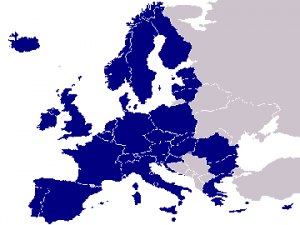
Banking systems across Europe were standardised on 1st August 2014 into the Single Euro Payments Area (SEPA), a regulation that ensures that all Euro electronic payments can be processed as easily as cash payments. Recent news reveals that due to the various benefits of SEPA, new technology systems are being created under the SEPA guidelines, which is increasing the use of these payment systems.
The European Payments Council (EPC) called on all stakeholders in August to adopt this regulation so that 500 million consumers and 20 million businesses could use a single bank account for all euro-denominated credit transfers and direct debits in Europe.
SEPA benefits the customer first and foremost, as the efficient service has improved cash flow, reduced costs and facilitated access to new markets. With SEPA, the customer relies on one bank account, one bank card, one SEPA Credit Transfer (STC) and one SEPA Direct Debit (SDD).
SEPA payment channels are also emerging and this week it was reported that leading Luxembourgish bank BGL BNP Paribas launched its Digicash M-Payment application for credit transfer which enables clients to pay for goods with their smartphones using money from their bank accounts.
Bitcoin also announced last week that the cryptocurrency can be purchased now without verification or registration from BTCexpress which will operate with SEPA Direct Debit (SDD) transfer and can be used as a secure payment method by retail customers.
The migration from traditional bank transfers to SEPA also means that customers paying by SDD, from an account in another EU country, can use the same payment method as those making payments within one country, without paying cross-border charges. Existing national euro direct debit schemes have been replaced by SDD and are now are implemented in all Eurozone countries.
SDD also helps customers by offering an enhanced service which enables them to choose the debit date they want to pay with, therefore reducing the number of rejected debits as a result of insufficient funds. Alongside this benefit, the company is also able to collect cash throughout the month rather than on one date and therefore, smooth out their cash flow.
In regards to technology, SEPA’s use of XML file structure across all payment systems means that information can be easily searched for across every country that the company operates in which in turn creates a more structured system.
The rise of virtual account structures within banks has helped the migration to SEPA Direct Debit and instead of account numbers, International Bank Account Numbers (IBAN) are issued to customers which are pan-European.
Martin Runow, the head of cash management corporate, Americas, for Deutsche Bank told Treasury & Risk that what “the IBAN system adds to this environment is that it enables companies to receive payments across Europe with 100 percent automatic identification of the sender of the money. This greatly improves the efficiency of reconciliations, although it doesn’t entirely eliminate reconciliation issues if a company wants to reconcile down to the invoice number.”
In addition to countries within the European Union using SEPA payment systems, the rest of the world, including the UK, will have until 31 October 2016 to migrate to using this payment method, which suggests that as further new payment technologies are created, SEPA will be even more widely used.








Pingback: SEPA’s Impact on New Payment Technology |...